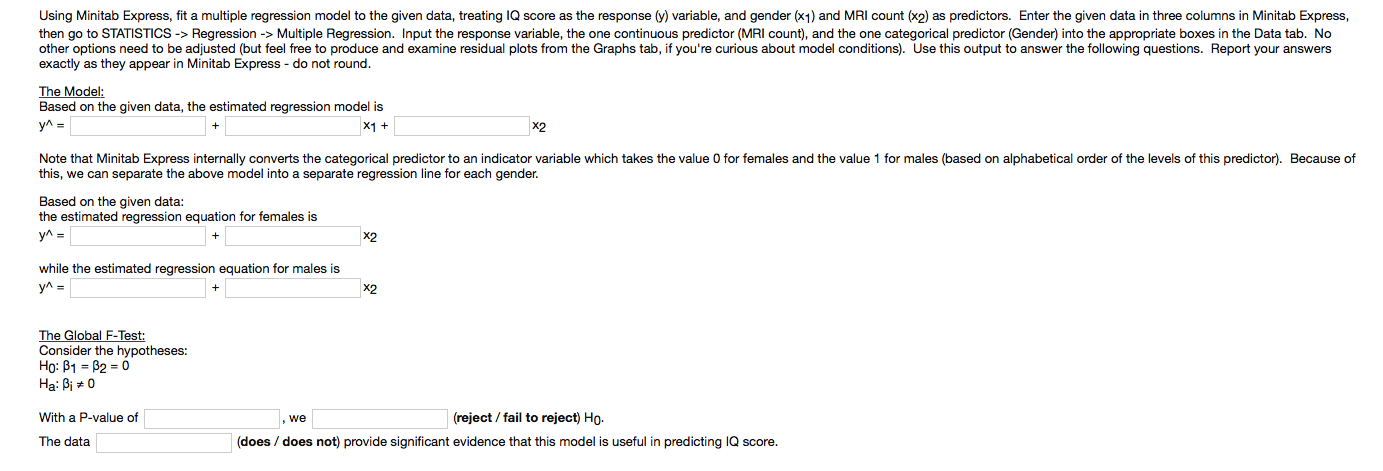

- #Residuals vs the variables minitab express how to
- #Residuals vs the variables minitab express software
Consider the following simple linear regression function: Here, we review basic matrix algebra, as well as learn some of the more important multiple regression formulas in matrix form.Īs always, let's start with the simple case first. In the multiple regression setting, because of the potentially large number of predictors, it is more efficient to use matrices to define the regression model and the subsequent analyses. A matrix formulation of the multiple regression model It is, however, particularly important for students who plan on taking Stat 502, 503, 504, or 505. variable or variables should be included in your regression model. We will only rarely use the material within the remainder of this course. Cut and paste into your report the scatter plot and the Minitab Express printout for.
#Residuals vs the variables minitab express how to
Next, we will look at how to fit a simple linear regression.Note! This portion of the lesson is most important for those students who will continue studying statistics after taking Stat 501. This fitted model can then be subsequently printed, summarized, or visualized moreover, the fitted values and residuals can be extracted, and we can make predictions on new data (values of X) computed using functions such as summary(), residuals(), predict(), etc. Use this variable instead of the original variable in your regression to see if the model becomes a better fit. A typical call may look likeĪnd it will return a fitted model object, here stored as myfunction. your transformation will then appear in your Minitab sheet. In R, models are typically fitted by calling a model-fitting function, in our case lm(), with a "formula" object describing the model and a "ame" object containing the variables used in the formula. We will review how to assess these assumptions later in the module.

Instead of the "line of best fit," there is a " plane of best fit."

Here is an example of a linear regression with two predictors and one outcome: The residuals are the fitted values minus the actual observed values of Y. The fitted values (i.e., the predicted values) are defined as those values of Y that are generated if we plug our X values into our fitted model. Ideally, all of these will have mean zero and bell-shaped distributions with similar standard deviations. You will have points in a vertical line for each category. When we have more than one predictor, we call it multiple linear regression: Answer: I assume you mean that you are plotting residuals against values of a categorical independent variable. The betas are chose such that they minimize this expression:Īn instructive graphic I found on the Internet The betas are selected by choosing the line that minimizing the squared distance between each Y value and the line of best fit. That is, the expected value of Y is a straight-line function of X. When we have one predictor, we call this "simple" linear regression:

With powerful statistics, industry-leading data analytics, and dynamic visualizations on.
#Residuals vs the variables minitab express software
Regression analysis is commonly used for modeling the relationship between a single dependent variable Y and one or more predictors. Minitab Statistical Software can look at current and past data to discover trends, find and predict patterns, uncover hidden relationships between variables, and create stunning visualizations to tackle even the most daunting challenges and opportunities.


 0 kommentar(er)
0 kommentar(er)
